Hanoi, the capital city of Vietnam, is a fascinating blend of the old and the new and this Hanoi Travel Guide will show you things and places to visit in Hanoi which has a blend of new and old. With a rich cultural heritage that dates back thousands of years, Hanoi is a city steeped in history, yet it is also a bustling and vibrant metropolis that is quickly becoming one of the most popular tourist destinations in Asia. Traveling to Hanoi will make you awestruck by its history and modernism. When you will be traveling to Hanoi you will observe its picturesque lakes and parks to its historic temples and museums, Hanoi is a city that offers something for everyone, making it the perfect place to start your journey through Vietnam.
If you are looking for planning your trip to Vietnam , you can read this Vietnam Travel Guide.
Whether you’re interested in exploring Hanoi’s rich cultural heritage, trying the local cuisine, or simply taking in the sights and sounds of this fascinating city, Hanoi is a destination that is sure to leave you with unforgettable memories.
This Hanoi Travel Guide will answer everything that you need to know for your Hanoi Travel. But before getting into the Top 10 places to visit in Hanoi and things to do in Hanoi, let us delve a little deeper into the history of Hanoi which will help you to appreciate and make your Hanoi travel more memorable.
History of Hanoi
Hanoi has a rich and complex history, with influences from various civilizations and cultures. Before you travel to Hanoi if you know the history, it will be easier for you to understand and relate to the places in Hanoi.
I am dividing the history of Hanoi into various parts for you to make it easier. The history of Hanoi has been divided into main phases which defined the city of Hanoi.
The early history of Hanoi
The area around Hanoi has been inhabited since ancient times, and archaeological evidence suggests that the Red River Delta was an important center of Bronze Age civilization. Hanoi was founded as Thang Long in 1010 AD by the Vietnamese King Ly Thai To and served as the capital of the Vietnamese kingdom for several centuries.
Chinese rule in Hanoi
In the late 1300s, the Vietnamese were conquered by the Chinese Ming dynasty, and Hanoi became part of the Chinese empire. This period of Chinese rule lasted until the mid-1400s when the Vietnamese gained independence and reestablished their kingdom.
Nguyen dynasty in Hanoi
In the late 1800s, the Nguyen dynasty was established in Vietnam, with its capital in Hanoi. During this time, Hanoi became a center of culture and education, with the construction of several notable buildings and institutions, including the Temple of Literature, which is dedicated to Confucius.
French colonial rule in Hanoi
In the late 1800s, France began to colonize Vietnam, and by the early 1900s, Hanoi had become the administrative center of the French colonial government. During this time, the city underwent significant modernization and expansion, with the construction of new buildings and infrastructure.
Vietnam War in Hanoi
During the Vietnam War, Hanoi served as the headquarters of the North Vietnamese government and was the target of frequent bombing raids by US forces. Despite this, the city managed to endure and emerged from the conflict largely intact.
Post-Vietnam War period in Hanoi
After the war, Hanoi became the capital of the newly reunified Socialist Republic of Vietnam. In the decades since, the city has undergone rapid modernization and economic development, becoming one of Southeast Asia's most important cities. Today, Hanoi is a vibrant, dynamic city with a rich cultural heritage and a thriving tourism industry.
This is just a brief overview of the history of Hanoi, and there is much more to learn about this fascinating city.
So after knowing the History of Hanoi, lets get into the details of Travelling to Hanoi. The sections below will help you to plan your Hanoi Travel.
When is the best time to visit Hanoi?
Hanoi has a tropical monsoon climate, with warm temperatures year-round, but there are variations in weather conditions throughout the year. Here are some things to consider:
Best Time to Visit Hanoi - Winter (December to February)
This is the driest and coolest time of year in Hanoi, with average temperatures ranging from 15-20°C. This is the best time to plan your travel to Hanoi if you want to avoid the heat and humidity of the summer months and enjoy outdoor activities and cultural events.
Spring (March to May)
This is the best time to visit Hanoi if you're interested in experiencing Hanoi's vibrant flowers and lush greenery. Temperatures start to warm up, reaching the high 20s°C by May, but are still comfortable for sightseeing and exploring.
If you ask me I would avoid these months as the weather gets pretty hot in Hanoi during this time.
Summer (June to August)
This is the hottest and most humid time of year in Hanoi, with temperatures ranging from the high 20s to low 30s°C. While the heat can be oppressive, this is a great time to visit if you're interested in experiencing the local culture and festivals.
You should avoid traveling to Hanoi from June to August.
Autumn (September to November):
This is another good time to visit Hanoi, with cooler temperatures and clear skies. The weather is mild and pleasant, making it ideal for exploring the city and its attractions.
In general, the best time to visit Hanoi is from December to April, when temperatures are cooler and more pleasant. However, regardless of the time of year, there is always something to see and do in Hanoi, so you can choose the time that works best for you.
How Many days should I stay in Hanoi?
The number of days you should stay in Hanoi depends on several factors, such as your interests and the pace at which you like to travel. However, most travelers recommend spending 3 to 5 days in Hanoi to see the city's major attractions and have time to experience local culture and cuisine.
Within 3 days, you can cover the highlights of the city and have a good overview of its history, culture, and food. If you have more time, you can explore further afield and visit nearby destinations, such as the stunning Halong Bay or the traditional village of Duong Lam.
I spent 3 Days 2 Nights in Hanoi and 2 Days 1 Nights in Halong Bay. In the below section, I will be sharing my Itinerary which I followed.
Where to stay in Hanoi
Vietnam is extremely cheap to travel to and stay in. Hanoi offers a wide range of accommodation options, from budget-friendly hostels to luxury hotels. You can get good hotels in Hanoi at around $50 per night with free breakfast and hostels in Hanoi costs approx $10 per night. Staying in Hanoi is extremely cheap.
There are lots of places where you can choose your staying option in Hanoi when you are traveling. I stayed at Old Quarter in Hanoi which is not only centrally located but everything is within walking distance.
I am sharing the places where you can book your stay in Hanoi while traveling in Hanoi.
Old Quarter in Hanoi
This is the historic heart of Hanoi, with narrow streets and well-preserved colonial-style buildings. The Old Quarter is a great place to stay if you're interested in exploring the city's cultural heritage, as well as its vibrant nightlife and street food scene. There are many budget-friendly guesthouses and hotels in this area.
Hoan Kiem Lake area in Hanoi
This is a central, well-to-do neighborhood, located near the famous Hoan Kiem Lake. It's a popular area for tourists, with a variety of restaurants, cafes, and shops. Accommodation options in this area include mid-range and luxury hotels.
Ba Dinh District
This is a large, upscale neighborhood, located just west of the Old Quarter. It's a quiet, peaceful area, with many embassies, government buildings, and parks. Accommodation options in this area include luxury hotels and serviced apartments.
My personal suggestion is unless you want to travel a lot within the city, you can skip this area.
West Lake area
This is a large, scenic lake located on the northwestern edge of Hanoi. The surrounding area is home to some of the city's most luxurious hotels, as well as many high-end restaurants and shops. This is a great place to stay if you're looking for a peaceful, upscale experience.
I would personally not recommend staying in the West Lake area as I found everything in Hanoi quite far from West lake.
Ultimately, the best area to stay in Hanoi depends on your personal preferences and travel plans. If you're looking for a more budget-friendly option, consider staying in the Old Quarter, while if you're looking for luxury and peace, and quiet, the West Lake area is a great option.
How to get around in Hanoi
Hanoi is a relatively small city, and there are several convenient ways to get around. In most of the places in Hanoi, if you are staying in Old Quarter, you can simply walk and visit the places.
However, listing down the various option to get around in Hanoi :
Bicycle or Motorbike Rentals in Hanoi
Renting a bicycle or motorbike is a great way to explore the city at your own pace and experience local life.
Taxi and Grab Taxis
Taxis are abundant and affordable in Hanoi, but it's a good idea to agree on the fare before starting the trip to avoid overcharging.
If you are opting for Grab Taxi then it is very easy. In most places where I traveled in Hanoi, I could reach in Grab Taxi by paying approx 40,000VND - 90,000 VND which is approx $2-$5.
Bus
The city has a well-developed bus network, but it can be crowded during peak hours, and navigating the route can be challenging.
You can also opt for Hop On and Hop Off City Tour buses. You can get a 24-hour pass for $15 and use it unlimited times.
Regardless of your preferred method of transportation, it's important to be aware of the traffic, which can be chaotic, and to take necessary precautions for your safety mainly while crossing the roads.
Top Places to visit in Hanoi
Hanoi has multiple places and sightseeing options for you, however, I would recommend visiting the below places in Hanoi to get a taste of the city and the history and to understand the way of life in Hanoi.
These places I have personally visited and loved and hence I have included them in the Top Places to Visit in Hanoi.
Train Street in Hanoi
Train Street in Hanoi is a unique and famous attraction in the city, known for its close proximity to a railway line. The narrow street, located in the Old Quarter, is lined with houses, shops, and cafes, and a train passes through several times a day at high speed, creating a unique and exhilarating experience for visitors.
The train street in Hanoi is surrounded by local houses and businesses, and it's a great place to observe everyday life in Hanoi. You can see people going about their daily activities, such as cooking, washing clothes, and playing games.
There are several cafes and coffee shops along Train Street, and they are popular with locals and tourists alike. You can sit and enjoy a coffee or snack while watching the trains pass by.
Train Street is a popular spot for photographers and social media influencers, and it's easy to see why. The unique combination of the railway line, narrow street, and local life makes for a photogenic and Instagram-worthy experience.
In summary, when visiting Train Street in Hanoi, you can expect a unique and unusual experience that combines the excitement of a railway line with the daily life of a vibrant city.
Water Puppet Show or Thang Long Water Puppet Show in Hanoi
Thang Long Water Puppet show is absolutely a must-do activity in Hanoi to get a glimpse of thousands of years of performance which is still practiced in Hanoi.
A water puppet show is a traditional Vietnamese performance that takes place on a stage with a pool of water. The performers control the puppets using long bamboo poles that are hidden beneath the surface of the water. The shows are accompanied by live music, and the stories and themes depicted are often drawn from Vietnamese folklore and history.
Water puppet shows are a popular attraction in Hanoi, and they offer visitors a glimpse into Vietnamese culture and history.
Thang Long Water Puppet Theater is a popular venue for water puppet shows in Hanoi, Vietnam. It's one of the oldest and most established water puppet theaters in the city, and it offers visitors the opportunity to experience this traditional and unique art form.
Water puppet shows at Thang Long Theater typically last around 45 minutes and are accompanied by live music. The stories and themes depicted in the shows are drawn from Vietnamese folklore and history, and they depict scenes such as dragon dances, farming activities, and rural life.
Visitors can expect to see colorful and intricate puppets, depicting characters such as dragons, phoenixes, and farmers, as well as scenes from Vietnamese folklore and daily life. The live music and the sound of water add to the atmosphere, and the performances are suitable for all ages.
If you're interested in experiencing the unique and traditional art form of water puppetry, a water puppet show is a must-see attraction during your visit to Hanoi.
You should buy the tickets directly from the Theatre as it will not only be cheaper but you can choose your seats. You can mail them in advance and book your tickets and pay once you reach the theatre.
Tip: Book tickets for the first 4 rows as the puppets are small and the first 4 rows give the best visibility.
Take a stroll in the Old Quarter of Hanoi
A stroll through the Old Quarter in Hanoi is a must-do activity for visitors to the city and shouldn't be missed during your Hanoi Travel.
The Old Quarter is a historic neighborhood that dates back over 1,000 years and is known for its narrow streets, traditional architecture, and bustling atmosphere.
The streets in the Old Quarter are narrow, winding, and lined with houses, shops, and cafes. They are a unique feature of the neighborhood and offer a glimpse into traditional Hanoian life.
The Old Quarter is home to many historic buildings, including traditional Vietnamese houses, temples, and pagodas. The architecture is a mix of French colonial and indigenous styles, and it offers a fascinating glimpse into the city's history and cultural heritage.
Visiting a traditional Vietnamese house will give a glimpse of how people used to stay in earlier days. One interesting factor is these houses are called Tube houses due to their small and long structure. The house was not broad but due to the high tax structure, the people had to pay if their houses were broad.
The Old Quarter is a lively and bustling neighborhood, and it's a great place to observe everyday life in Hanoi. You'll see street vendors selling goods, people going about their daily activities, and local shops and cafes.
The Old Quarter is also home to several local markets, where you can buy a range of goods, from fresh produce to handmade souvenirs.
The Old Quarter is famous for its street food, and it's a great place to try traditional Vietnamese dishes such as pho, bun cha, and banh mi.
A stroll through the Old Quarter in Hanoi offers visitors a unique and memorable experience that combines history, culture, and local life. Whether you're interested in architecture, food, or just soaking up the atmosphere, a visit to the Old Quarter is a must-do activity during your time in Hanoi.
Visit the Hoa Lo Prison to get a Glimpse of the History of the Vietnam War Struggle
Hoa Lo Prison is a historical site located in Hanoi, Vietnam. It was originally built by the French colonial government in the late 19th century and was later used as a prison by the Vietnamese government during the Vietnam War. The prison has since been preserved as a museum, and it offers visitors an insight into the history of Vietnam and the experiences of prisoners during the colonial and wartime periods.
The Hoa Lo Prison museum displays exhibits and artifacts related to the history of the prison, including old cells, shackles, and other implements of punishment. Visitors can learn about the experiences of prisoners during the colonial and wartime periods.
Guided tours are available and provide visitors with an in-depth look at the history of the prison and the experiences of prisoners.
The museum features interactive displays that allow visitors to learn about the history of the prison and the experiences of prisoners in a hands-on and engaging way.
The museum includes a memorial to the prisoners who were held at Hoa Lo Prison during the colonial and wartime periods. Visitors can pay their respects to these individuals and learn about their experiences.
Visit the Temple of Literature in Hanoi
The Temple of Literature in Hanoi, Vietnam, is a historic temple and a renowned educational institution. It was built in 1070 and is dedicated to Confucius, the Chinese philosopher, and educator. The temple also serves as a shrine to Vietnam's finest scholars and men of literature.
It features several courtyards, pavilions, and gardens, as well as various stone steles that commemorate the achievements of Vietnam's royal examinations and the country's top scholars. The Temple of Literature is a popular tourist destination and a symbol of Hanoi's rich cultural heritage.
Spend some Time near Hoan Kiem Lake
Hoan Kiem Lake is a picturesque lake located in the heart of Hanoi, Vietnam. You will for sure feel rejuvenated after taking a walk near Hoan Kiem Lake.
If you are visiting Hanoi over the weekend the Hoan Kiem lake transforms into an activity area where musical concert, street dance, and street market take over at night and transforms into a beautiful site.
My suggestion is to visit Hoan Kiem Lake in the morning and evening as during this time you can see various activities like Tai Chi sessions, food stalls, etc and Hoan Kiem lake looks beautiful at night.
It is surrounded by several notable landmarks and tourist attractions, including:
The Temple of the Jade Mountain (Den Ngoc Son): A small temple located on a tiny island in the middle of the lake.
The Huc Bridge: A wooden bridge that provides access to the Temple of Jade Mountain.
The Ngoc Son Temple Culture and History Museum: A museum located near the lake that showcases the history and cultural significance of the Ngoc Son Temple.
The Turtle Tower (Thap Rua): A small tower located on a small island in the lake, said to be where a legendary turtle returned a magical sword to the emperor.
The Hanoi Opera House: A French-colonial-style building located near the lake, it is a major cultural venue in Hanoi and hosts performances of opera, ballet, and classical music.
Take photographs at Graffiti Street in Hanoi
Hanoi's Graffiti Street, also known as "Street Art Street," is a popular tourist destination located in the city's Old Quarter. It is a narrow alleyway lined with colorful street art and graffiti, created by local and international artists. Street art and graffiti depict a range of subjects, from political and social commentary to abstract and imaginative designs.
The street is a vibrant expression of Hanoi's contemporary culture and provides a contrast to the city's traditional architecture and cultural heritage. Visitors can take a walk down the alleyway, admire the artwork, and take photographs. Graffiti Street is a must-visit for anyone interested in street art or seeking a unique cultural experience in Hanoi.
Visit the Pagodas in Hanoi
Hanoi, Vietnam is home to several beautiful pagodas, each with its own unique history and cultural significance. Some of the most famous pagodas in Hanoi include:
Tran Quoc Pagoda: The oldest pagoda in Hanoi, dating back to the 6th century, is located on a small island in the middle of West Lake.
Quan Thanh Temple: A temple dedicated to the Taoist god of the North, Tran Vo, located in the Ba Dinh district.
Tay Phuong Pagoda: A well-preserved pagoda with unique architectural features, including wooden carvings and a statue of Buddha made from one piece of jade.
One Pillar Pagoda: A unique pagoda built in the 11th century, featuring a single pillar supporting a small pagoda, located in Ba Dinh Square.
But Thap Pagoda: A large pagoda located in the Bac Ninh Province, famous for its elaborate wooden carvings and numerous statues of Buddha.
Visitors to Hanoi can explore these pagodas and learn about the religious and cultural traditions they represent, as well as admire their architectural beauty and artistic details.
Get a Bird's eye view of Hanoi from Lotte Center
The view from Lotte Center Hanoi is likely to be stunning and panoramic, offering a bird's eye view of Hanoi's bustling cityscape. From the upper levels of the building, one can see the city's iconic landmarks and surrounding areas, including lush parks and green spaces, historical monuments, and the scenic Red River.
The view is likely to be especially impressive during nighttime when the city is lit up and the lights create a beautiful and vibrant atmosphere.
Offbeat Places to Visit from Hanoi
Two offbeat places you can visit from Hanoi which is just an hour's drive are Incense Village and Bat Trang Ceramic village. Both these places will give you a glimpse of Art in Hanoi and extremely unique experiences in Hanoi which shouldn't be missed.
Incense Village ( Quang Phu Cau village ) from Hanoi
Incense Village ( Quang Phu Cau village) is a traditional craft village located on the outskirts of Hanoi, Vietnam. The village is known for its production of incense sticks, which are made from a mixture of bamboo powder, fragrant oils, and other natural ingredients. The incense sticks are used in religious ceremonies, meditation practices, and aromatherapy.
Visitors to Incense Village can observe the process of making incense sticks, see the traditional workshops, and learn about the history and cultural significance of incense in Vietnam. The village is also a great place to buy traditional incense products, as well as other handmade crafts and souvenirs.
In addition to its traditional industry, Incense Village is surrounded by picturesque rice fields and rural landscapes, providing visitors with a glimpse into the rural life of Vietnam. Overall, Incense Village is a unique and interesting cultural experience, offering visitors a chance to learn about a traditional craft and explore the rural outskirts of Hanoi.
Bat Trang ceramic Village from Hanoi
Bat Trang Ceramic Village is a traditional craft village located near Hanoi, Vietnam. The village is known for its production of ceramics, including vases, plates, bowls, and other household items. The ceramics are made using traditional techniques, such as hand-molding and firing in kilns, and feature intricate patterns and designs that reflect the cultural heritage of the region.
Visitors to Bat Trang Ceramic Village can observe the process of making ceramics, see the traditional workshops, and learn about the history and cultural significance of ceramics in Vietnam. The village is also a great place to buy traditional ceramics, as well as other handmade crafts and souvenirs.
In addition to its traditional industry, Bat Trang Ceramic Village is surrounded by picturesque rice fields and rural landscapes, providing visitors with a glimpse into the rural life of Vietnam. Overall, Bat Trang Ceramic Village is a unique and interesting cultural experience, offering visitors a chance to learn about a traditional craft and explore the rural outskirts of Hanoi.
Day Trips from Hanoi
There are several popular destinations near Hanoi that are worth visiting:
Ha Long Bay from Hanoi
This stunning natural wonder is a UNESCO World Heritage site and one of the most famous tourist attractions in Vietnam. Ha Long Bay features thousands of towering limestone islands and islets and is a popular destination for kayaking, fishing, and scenic boat tours.
Hoa Lu and Tam Coc from Hanoi
These two nearby destinations offer a glimpse into Vietnam's ancient past, with the ancient capital of Hoa Lu and the picturesque Tam Coc river and rice paddies.
Ninh Binh from Hanoi
This region is located south of Hanoi and is known for its tranquil rivers, lush green landscapes, and impressive limestone formations.
Cat Ba Island from Hanoi
This large island located in Ha Long Bay is known for its stunning beaches, national parks, and diving opportunities.
These are just a few of the many destinations near Hanoi that offer a unique and memorable experience for visitors. Whether you're interested in natural beauty, cultural history, or adventure, there is something for everyone in this part of Vietnam.
Hanoi Street Food and what to eat in Hanoi
Hanoi is famous for its street food, offering a diverse range of local dishes made with fresh ingredients and unique flavors. Some of the must-try street food in Hanoi include:
Pho: A noodle soup made with rice noodles, beef or chicken broth, and a variety of herbs and spices.
Bun Cha: Grilled pork served with vermicelli noodles, a side of herbs, and dipping sauce.
Banh Mi: A Vietnamese baguette filled with a variety of ingredients, including meat, vegetables, and sauces.
Banh Xeo: A crispy fried pancake filled with seafood, meat, and vegetables.
Cha Ca La Vong: A dish of grilled fish served with vermicelli noodles and herbs.
Xoi: Sticky rice dishes served with various toppings, including eggs, meat, and vegetables.
Nem Ran/Cha Gio: Fried spring rolls filled with meat, mushrooms, and spices.
In Hanoi, you can try these dishes at local street food stalls, restaurants, and markets. The city is also known for its traditional cuisine, including dishes made with fish from the nearby Red River, and vegetarian cuisine influenced by the Buddhist tradition. Overall, Hanoi offers a unique and delicious culinary experience for visitors to enjoy.
Egg Coffee in Vietnam
Egg coffee, or Ca Phe Trung, is a unique and traditional coffee drink originating from Hanoi, Vietnam. It is made by whipping together egg yolks, sugar, and condensed milk, which is then poured over a strong cup of coffee. The resulting drink is creamy, rich, and sweet, with a smooth texture that balances out the bitterness of the coffee.
Egg coffee is believed to have originated in the 1940s when a shortage of fresh milk during the war led to the use of egg yolks as a substitute. The drink quickly gained popularity and has since become a staple of Hanoi's coffee culture.
Cafe Giang is a famous coffee shop located in Hanoi, Vietnam. It is considered the birthplace of egg coffee and is known for serving one of the best and most authentic versions of the drink in the city.
Established in the 1940s, Cafe Giang has been serving its signature egg coffee for generations. The recipe, which was created by the founder, is a closely guarded secret and is made with a special blend of coffee, egg yolks, sugar, and condensed milk.
Visitors to Cafe Giang can enjoy the iconic egg coffee in a traditional and historic setting. The cafe has a nostalgic atmosphere, with vintage decor and old-fashioned furnishings that evoke a bygone era.
Overall, Cafe Giang is a must-visit for anyone interested in trying Hanoi's famous egg coffee, or for anyone who wants to experience a piece of the city's rich coffee culture and history.
Hanoi Travel Tips
Hanoi is extremely cheap to travel to and will not cost you much. Traveling in Hanoi is also extremely easy as the place is extremely tourist friendly.
However, keep the following Hanoi Travel Tips in mind for an amazing travel experience in Hanoi.
Street Food in Hanoi: Always eat from street stalls unless you really want to splurge. The street food in Hanoi is not only cheap but they are authentic as most locals eat at street stalls.
Negotiate: You should negotiate for everything in Hanoi apart from food. By the way an interesting this, just for fun I negotiated a price of a Ban Minh and to my surprise, they gave me a 10,000 VND discount immediately. But yes negotiate as much as you can
Use Grab or Walk: Instead of metered taxis, book your rides on Grab as it's super cheap, and metered taxis will not always go on the meter and will ask for an exorbitant amount.
Free Walking Tours in Hanoi: There are lots of free walking tours which are offered by locals in exchange for a tip at the end. These walking tours often turn out to be cheaper compared to booking a tour from an agency.
Don't drink Tap Water: Tap water is not at all safe in Hanoi, buy bottled water or carry a reusable bottle that you can fill at a restaurant or a hotel.
If follow this Hanoi Travel Guide and tips in mind you should have an amazing travel experience traveling in Hanoi.
So enjoy your Hanoi Travel and let me know in the comment section below , you experience of travelling to Hanoi.




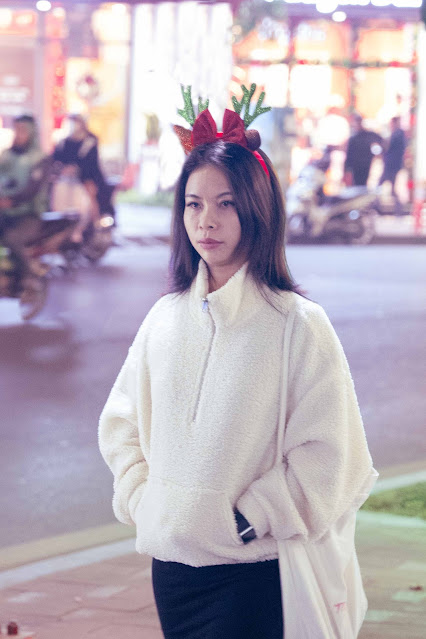




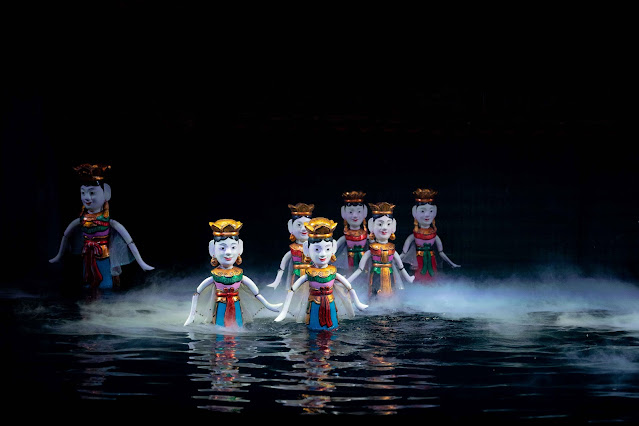



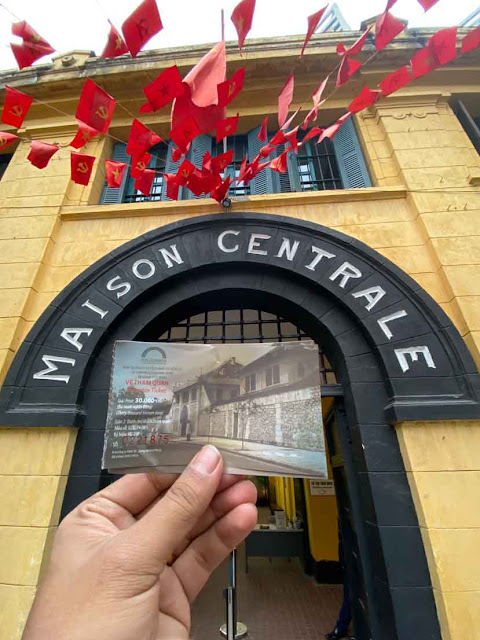
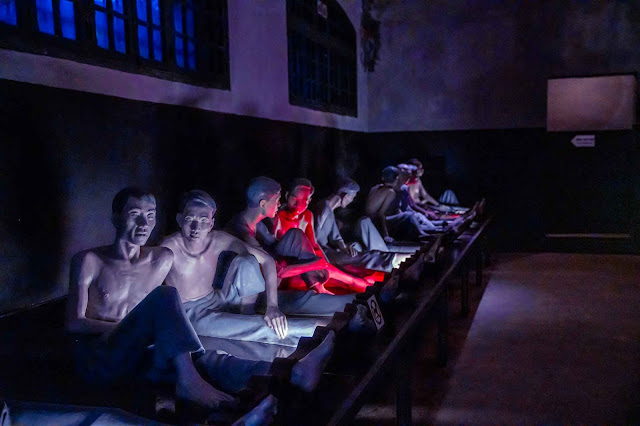
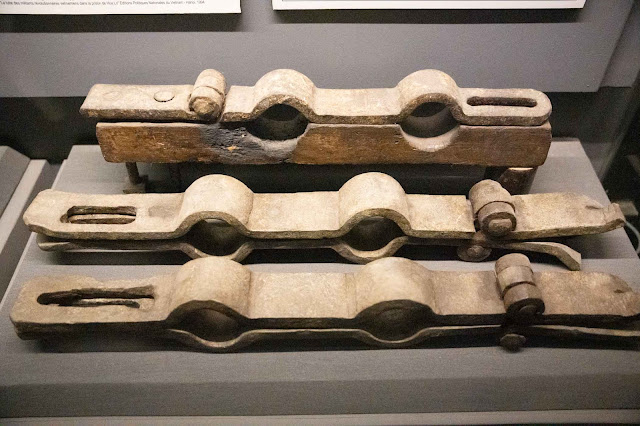



















No comments:
Post a Comment